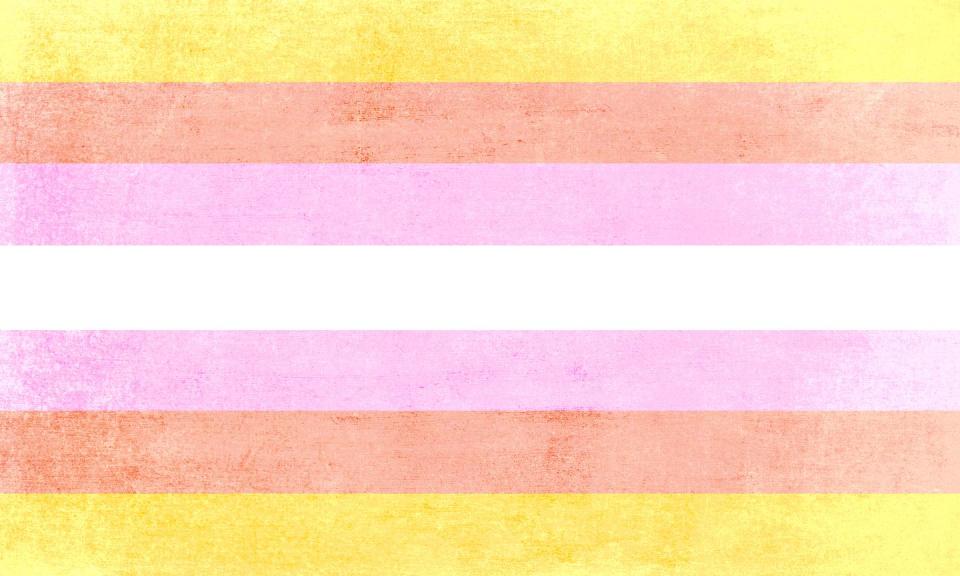Question: 'What If I Identify With All Gender Identities?'

Perhaps you’ve felt boxed in by the concept of gender, and having to choose an identity within the binary of male versus female gives you major angst. Or maybe you’ve thought on multiple occasions, “Why should I have to choose just one gender out of all of those accessible to me? Why can’t I be all of them?” Spoiler alert: You can be…and, in fact, you might be pangender.
Pangender is a gender identity term that describes a person who identifies as any and all genders, says Ashley Zayas, LCSW, a licensed clinical social worker and therapist who serves clients in New York and New Jersey. This can include genders within the gender binary of male versus female as well as outside of it. Moreover, a pangender person might experience the various genders they identify with to differing degrees, one at a time, or simultaneously, Zayas adds.
Meet the experts:
Ashley Zayas, LCSW, is a licensed clinical social worker and therapist who serves clients in New York and New Jersey.
Cal Klingensmith, LCSW, is a licensed clinical social worker and therapist based in New York who specializes in gender-affirming care.
It’s also important to note that a pangender person can only identify with genders within their own cultural background and life experiences. For example, unless they have an Indigenous background, their gender would not include two-spirit (an umbrella term that describes someone who embodies both a masculine and feminine spirit). Similarly, if they don’t have roots in South Asia, their gender would not include hijra (another umbrella term specific to South Asia, especially India, that describes intersex folks, transgender people, and nonbinary identities), says Zayas.
So what does it mean to be pangender and how do you know if the pangender identity is right for you? Ahead, experts explain all you need to know about the gender identity.
How do I know if I’m pangender?
While there’s no set criteria for determining whether or not you’re pangender because every gender identity exists on a spectrum, here are some expert-approved signs the pangender identity might be right for you:
You identify with the gender assigned to you at birth, but you experience other genders as well.
You experience many genders, at varying degrees, simultaneously.
You experience a different gender every other day (a.k.a. you might identify as nonbinary one day and gender neutral the next).
You don’t really mind how other people perceive you as you feel comfortable with all gender identity labels.
You believe your gender to be expansive, and don’t feel comfortable boxing yourself into one label.
When choosing a gender identity label (if you do choose to label yourself), pay attention to what feels uncomfortable (is it that you’re uncomfortable with your chest? Or maybe you don’t enjoy being seen as either a man or woman?) and then go from there, explains Cal Klingensmith, LCSW, a licensed clinical social worker and therapist based in New York who specializes in gender-affirming care.
FYI: When it comes to gender, it’s okay to play around with different labels until you find one that feels right to you. Eventually, you might find yourself resonating most with the pangender identity or another identity altogether.
If you're struggling to find a gender that feels right to you, you're not alone. These folks offer some advice on how to discover your gender identity:
What’s the difference between pangender, omnigender, nonbinary, and pansexual?
This might sound duh, but gender and sexual orientation are not the same thing. Someone’s gender does not determine their sexual orientation and vice versa. Sexuality describes who you’re physically attracted to, while gender describes how you internally feel about your own gender identity, explains Klingensmith.
So while both pangender and pansexual begin with the prefix “pan-” (meaning “all,” BTW), pangender describes someone who understands their gender identity as encompassing all genders, while someone who is pansexual experiences sexual attraction towards people of all genders or is attracted to others sexually regardless of their sex or gender identity. In other words, someone who is pansexual is attracted to all people.
In terms of the difference between pangender and nonbinary, nonbinary is an umbrella term that describes people whose gender identity falls outside of the two gender binary, says Zayas. Someone who is pangender may experience the nonbinary label as one of their many gender identities, but someone who is nonbinary isn’t necessarily pangender. Someone who is nonbinary might not experience gender at all (i.e., they’re agender), which is the complete opposite of what it means to be pangender.
Omnigender, on the other hand, is similar to pangender. The main difference is that omnigender people may connect with many genders, but not all. Also, omnigender folks are usually not as ambivalent about their gender (a.k.a. gender blind) compared to those who identify as pangender. “Gender matters a bit more to someone who’s omnigender, and while they may identify with a couple of different genders, the gender they’re identifying with in the present is important to them,” explains Klingensmith.
What are neopronouns? Would a pangender person use them?
You might be familiar with the pronouns he, she, and they, but in recent years new (or neo) pronouns have been introduced to the lexicon. “Neopronouns are pronouns that are either new to the English language or are terms new to being used as pronouns. Examples include xe/xem/xyrs, fae, faer, faers, and em/ems,” explains Zayas who goes by xe/xem pronouns. Some people may also use their name in place of a pronoun. Neopronouns are preferred by nonbinary folks who feel these words encompass their gender identity more than conventional pronouns (he, she, they).
“Someone who is pangender may want to use neopronouns in place of he/him/his or she/her/hers as it can provide a space for all of their genders to exist, while some may also opt for all pronouns and allow the speaker to choose,” says Zayas.
Someone who is pangender can identify with really any pronoun, adds Klingensmith.
Remember: Pronouns aren’t always indicative of someone’s gender identity, and whatever pronouns someone wants to go by is entirely their choice. Ultimately, what’s important is that you’re respectful of whatever pronouns (neo or otherwise) the person you’re engaging with chooses to use.
How can you support those in your life who identify as pangender?
If someone “comes out” to you as pangender, the first (and most important) step to supporting them is respecting their identity. This means you support their choice of pronouns, name, and gender expression—period.
The next step is getting curious about what that identity means to them. It doesn’t hurt to ask, “So you identify as pangender, what’s important for me to know about your identity?” says Klingensmith. At the same time, don’t expect your pangender friend, family member, or partner to be your personal tutor on all things pangender. Be willing to do your own research as it can be draining for queer folks to have to explain their identity to others constantly. (You’re reading this, which means you’re already taking steps to learn more!)
Finally, “ask the person how you can support them, as it will be different for each individual and may change over time,” says Zayas. Don’t assume how your pangender loved one would like to be championed. Instead, let them teach you how they would most like to receive your support.
What is the pangender flag?
The most common pangender flag was created in 2015 by Tumblr user Cari Rez Lobo of the blog pangendering.
The flag consists of various light shades of pink and yellow, as well as white. The yellow represents all genders outside of the male versus female binary. The light red refers to the transition to the genders that are related to male and female. The light pink stands for the combination of male and female. Finally, the white represents the inclusion of all of these identities as white light encompasses all the different colors, similar to how the pangender identity includes all genders.

How can you show pangender pride?
Other than plastering the pangender flag on all available surfaces (because why not?), you can show pride by celebrating Pangender Pride Day, which is observed annually on June 19.
And if you want to connect with other people who also identify as pangender, you can do so by joining communities on Reddit, such as r/pangender and r/NonBinary, and Discord. You can also follow hashtags #pangender and #pangenderpride on Instagram and other social media sites.
You Might Also Like

